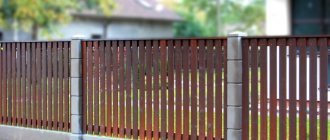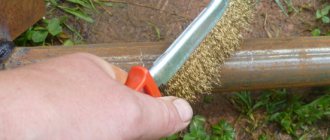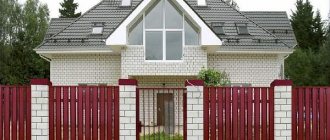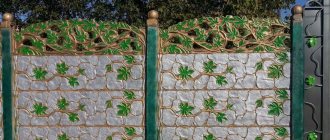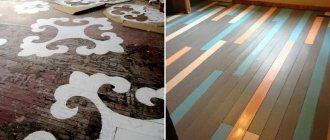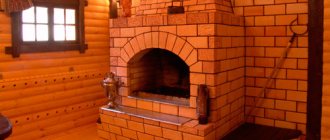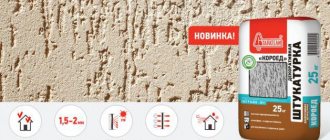Wood has been considered one of the main building materials for a long time. Wood was used both to build houses and to construct surrounding infrastructure (fences, sheds, poles, etc.). But how to treat a wooden fence if it is so exposed to environmental hazards?
With the development of technology, new building materials have appeared, which have supplanted the position of wooden structures in house construction. But wood is still on the list of the most popular materials for construction work in the private sector. This is especially true for the construction of various fences and fencing.
Why and from what it is necessary to protect natural wood
Wood is 90-99% organic. This makes it vulnerable to environmental influences:
- high humidity. Unprotected wood, like a sponge, absorbs excess moisture from the air during precipitation and dew. As a result, mold multiplies in it, and pockets of rot appear;
- atmospheric phenomena. A wooden fence is constantly exposed to the open sky and is susceptible to the influence of sun, wind, rain, and frost. All these factors lead to mechanical destruction of wood fibers, causing the formation of cracks;
- exposure to fire. This material is flammable, it can easily ignite from any spark;
- biological factors. Many insects feed on wood (bark beetles, borers). They make internal passages in it, which spoils the appearance of the product and reduces its performance.
Bottom line: therefore, wood requires protection from moisture, fire, insects, and the destructive effects of the external environment.
What tools to use
To protect wooden structures, special means are used - antiseptics, protective impregnations. They are presented as:
- paste;
- organic compounds;
- aqueous solutions;
- oil emulsions.
Recommendation: Since the fence is constantly exposed to the open air, weatherproof exterior products should be used before protecting it.
You can make your own impregnation for a wooden fence. For this purpose, means are used that create an unfavorable environment for the development and reproduction of bacteria. It could be copper/iron sulfate. The substance is diluted in water and the wood is soaked in this bath for a day.
Natural raw materials will be protected from rotting by treating them with hot oil. You can also use tar and turpentine for these purposes.
The Finns, who specialize in wood processing, have come up with their own method of protecting it. To do this, they use a mixture of flour, vitriol, lime and salt. All this should be diluted with hot water and the wood should be soaked in the composition twice. You can add color to the liquid to give the material a certain shade. This Finnish impregnation ensures the safety of raw materials for up to 20 years.
Of the ready-made compositions for protecting wood, liquid glassine, consisting of herbicides and antiseptics, is effective. It is suitable for use in conditions of high humidity - it can be applied even in rainy, damp weather to fresh wood. Due to its light structure, the solution quickly penetrates deep into the material, displacing water from it. There it polymerizes, closing all microcracks and pores. This provides protection from insects, water, air, and microorganisms.
How to coat a wooden fence for durability outdoors
There are several types of liquid compounds that can be used to coat wood against adverse effects. They can also play a decorative role, emphasizing the texture, tinting or painting the fence during processing.
Apply a protective layer of impregnation
Let's take a closer look at how you can treat a wooden fence for a long time, cheaply and beautifully.
Primers and impregnations
Manufacturers produce the following types of primer and impregnating compositions for wooden surfaces:
- Antiseptic. The product protects wooden material from the proliferation of pathogenic microorganisms: fungi, putrefactive bacteria. They are processed in dry weather.
- Fungicide. Destroys harmful insects and prevents their reappearance. You can use it to cover a new or repaired fence.
- Fire retardant. Treatment with it reduces the level of flammability of wood, preventing accidental fire of the fence.
- Universal compositions “2 in 1”, “3 in 1” for wooden surfaces. They immediately contain an antiseptic, a fungicide and a fire retardant. You need to impregnate a board fence with them in dry and windless weather. You need to coat a wooden fence with fire retardant 2-3 times.
Antiseptic
When applied, part of the treatment penetrates deeply into the material. When it dries, it creates a film on the wooden surface of a picket fence or solid fence. As for the decorative qualities of primers, two types are produced:
- Glazing coating. This is a translucent impregnation. Processing with it leaves a natural texture, imparting only a faint tint to the wooden material.
- Covering primer. A tinted composition that allows you to radically change the tone of the wood. You can use it on a newly built fence or an old one that has been stripped of paint.
Before priming the fence with your own hands, you should take into account that all antiseptic and fungicidal compounds are toxic. Although the fence has to be processed outside, safety measures are required.
Before covering a wooden surface with impregnation, the respiratory tract is protected with a respirator, eyes with goggles, and hands with rubber gloves.
Fencing at the dacha
Varnishing
The fence can be varnished for durability. It happens:
- alkyd;
- acrylic;
- urethane;
- polyurethane;
- nitrocellulose.
Surface preparation
For outdoor work and wood processing, an alkyd composition is best suited. It well emphasizes the texture (natural pattern) of the material.
Painting protects it from moisture and rotting, and also adds shine. The price of alkyd coating is relatively low. Fresh varnish is toxic and has a strong smell. Therefore, they need to handle the fence wearing personal protective equipment.
The nitrocellulose composition dries to form the most durable coating. The treatment is moisture resistant and is not afraid of temperature changes. Disadvantages: high cost and the highest toxicity among all paints and varnishes.
You only need to treat a fence at your dacha with nitro varnish while wearing a respirator. In addition, remove the dog and other animals from the yard. Otherwise, they may get severe poisoning.
Applying varnish to a wooden fence
You can also cover a wooden fence with polyurethane material. It will make the fence stronger after processing, increase the moisture resistance of organic matter and its resistance to mechanical stress.
The coverage will last a long time. You won’t have to update it for 7-10 years. The cost of impregnating a wooden fence with polyurethane coatings is relatively high.
The most environmentally friendly varnish is acrylic based. Its solvent is water, so this treatment does not emit harmful substances and has almost no odor.
The composition is ideal for outdoor use. When processed, it gives the wooden fencing moisture resistance, resistance to ultraviolet radiation and temperature changes. Acrylic varnish is inexpensive.
Fence in a private house
If you want to give the fence a darker tone (for example, brown), it can be stained before painting or applying varnish.
Fence painting
When choosing how to protect a wooden fence, you should take a closer look at the paint. To make the coating beautiful and durable, paint and varnish materials must be chosen correctly. Products must be façade and intended for woodworking.
Antiseptic agents
You can paint a wooden fence with the following compositions:
- Acrylic. Water dissolves pigments and polymer particles in this paint. Therefore it is not harmful. You can safely paint a wooden fence with this paint without a respirator. Acrylic coating lasts 5–7 years in outdoor conditions. The treatment is resistant to moisture, cold and heat, and temperature fluctuations. She is not afraid of ultraviolet radiation. The cost of acrylic is low.
- Oil. Its solvent is non-toxic drying oil. The composition penetrates deeply into the wooden structure and, forming a resistant film, protects the fence from temperature changes. Drying oil replaces an antiseptic against rotting and moisture, and prevents the proliferation of pathogenic microorganisms. Among the disadvantages: the fence on the street takes a long time to dry; over time, ultraviolet radiation marks it and covers the wooden surface with burnt areas. Oil dye is cheap.
- Alkyd. This is enamel, treatment with it gives the painted wooden fence a glossy shine. The solvent and hardener for pigments and polymer resins in it are white spirit and various acids. Alkyd paint is the most budget option among paintwork materials. Of the minuses: low resistance to ultraviolet radiation and sudden temperature changes. Because of this, a wooden fence outside has to be painted again every 2-3 years.
- Latex and polyurethane. It is a very good choice for outdoor use. Synthetic rubber and polyurethane copolymer, when processed, give the coating moisture resistance, strength, gloss, durability and ultraviolet resistance. Paint consumption is low. Disadvantage: treating a fence at the dacha with such paints and varnishes is expensive.
The photo below shows a fence in the village.
In the country
Features of fence processing
When applying protective compounds to fence elements, a number of factors should be taken into account. The side facing the street must be coated with an antiseptic that will not spoil the appearance of the wood. On the back side of the fence it is not necessary to adhere to this rule.
It is also necessary to take into account that the fencing parts are in different conditions: some have constant contact with the ground (pillars), while others take the main “impacts” of the environment (sections). The location of the fence also matters. If it is located on the sunny side, it is necessary to provide it with additional protection from fading.
Advice: given these factors, it is better to purchase several antiseptics for different purposes and compositions.
Updating an old fence
If you already own a wooden fence, then do not forget about timely processing, which should be carried out at least once every 2-4 years:
- First you need to carefully remove the top layers of paint with a scraper or wire brush. There are also special gels that soften old layers of paint and allow them to be removed.
- Make sure there is no damage from insects or rot. If such damage is found, remove it or replace the old boards with new ones.
- After these preparatory procedures, proceed to applying varnish or paint. The more carefully you treat the fence, the longer it will please you with its appearance and will not require large investments.
If you follow simple tips on selecting materials for the fence and processing it, the finished structure will last for many years. And following the rules of operation and maintenance will help maintain the attractive appearance of a wooden fence.
Protecting a new fence
After purchasing wood for building a fence, you can immediately begin processing it. It is performed in the following sequence:
- Posts, veins and boards for fence sections are cleared of bark.
- The material can be planed to close the pores. This will extend the life of the raw materials.
- If there is contamination or a rough surface, these areas are treated with sandpaper.
- Small potholes and cracks are filled with a special primer that smoothes the surface of the wood. After this, these areas are sanded again.
- All parts are coated with a protective agent. Depending on the consistency, it is applied with a brush or by dipping.
- A day later, when the wood has absorbed the substance, the procedure is repeated.
- After all elements have completely dried, installation of the fence begins.
Note: impregnation against rotting and insects will not only protect the wood, but also reduce paint consumption.
Preparing for painting
If the owner decides to paint the wooden fence, then after completing the procedure with an antiseptic, a primer layer is applied to it. It will ensure strength, long service life of the paint, and protect the wood from rotting. After drying, the primer is applied again. It is irrational to cover wood with thick colored paint. The tree loses its natural attractiveness.
Therefore, it is recommended to treat wooden fences with impregnation, stain or varnish. The natural pattern remains visible and is preserved for the entire life of the fence.
Building materials stores have a large selection of varnish materials: acrylic, alkyd, polyurethane, dispersion. Any of them is suitable for covering the surface of wood, but the most environmentally friendly is acrylic-based varnish. It does not cover the wood grain, but rather emphasizes its elegance.
Return to contents
Processing an old fence
Protection is needed not only for a new fence, but also for an old fence that has served for several years. The first step is to inspect the structure. It is removed from the old coating, dirt, and mold. Parts with rotten areas are replaced.
Remember: antiseptics and impregnations do not restore wood, they only protect it. The smoother the base, the better the primer and paint will adhere.
Impregnation is applied to the cleaned, leveled surface in two layers, allowing each layer to dry for at least a day. The product will close the pores of the material and prevent its further destruction. Distribute the special composition with a brush, after stirring well.
You can read how to build yourself a fence from pallets here...
Preparing lumber for the fence
In accordance with the above, it is necessary to follow the following recommendations before starting work on installing the fence:
- It is necessary to purchase high-quality wood, without rot and wormholes - passages left by the larvae of wood-boring insects or bark beetles.
- If possible, it is better to buy pre-dried wood, otherwise you need to dry it yourself by stacking it. There are five basic rules for its installation:
- Wood should not be laid directly on the ground to dry. It is necessary to lay supports made of bricks, logs, timber, etc. under the bottom row.
- In the rows between the boards, a gap (vent) of 2-3 cm wide is required.
- Layers of lumber are laid with spacers - cuttings of boards, placing them with slats in increments of 1-1.5 meters.
- The stack must be covered on top with some kind of moisture-proofing material without covering the sides.
- The ends of the boards are coated with oil-based paint or used machine oil.
The drying time of lumber in a stack depends on the thickness of the latter and can range from several weeks to a couple of months, so it must be purchased in advance.
Fire protection
If the fence is located next to buildings on the site, it can be provided with additional protection from fire. To do this, the raw materials should be coated with a fire retardant with an antiseptic effect. This product penetrates deep into the material, creating a protective film on its surface. Fire retardants are applied by soaking the raw material in a bath or using a brush/spray.
Attention: when working with ready-made or home-made wood protective compounds, you must follow safety precautions (wear a respirator, gloves).
Treating a wooden fence will allow you to take care of its durability even at the construction stage. A high-quality composition applied using appropriate technology will protect the material for a long time from the destructive influence of the environment, preserving its natural structure and beauty.
How to treat a wooden fence?
Due to its composition and structure, wood is especially susceptible to external damage from three sources: fire, insect pests and humid environments.
Fire protection for a wooden fence is not as important as for permanent buildings. However, many are trying to protect the entire fence from a possible fire, or at least treat those areas that are located next to the buildings.
To do this, you can treat the fence with fire retardants. But such treatment will be effective if it is done by first placing the material in baths with a solution. Applying a layer on an already installed fence will not give much effect.
Protecting wood from insects is important during the preparatory stage. Timely removal of bark from the surface of the tree will get rid of borers and bark beetles.
Moisture is the main enemy of a wooden fence. High humidity becomes a favorable environment for the spread of rot and mold. This is especially true for the bases of pillars dug into the ground. From the outside, the fence is also exposed to rain and humid air, which causes it to rot. An additional problem is the penetration of moisture into the wood and freezing in winter, which subsequently leads to cracking.
That is why protecting a wooden fence from moisture in general and rotting in particular is an important element during its construction. At the same time, it is necessary to protect not only the pillars (them first of all), but also the fence spans.
On video: types of wood treatment against rotting.
Protective agents against rotting
Proper preparation and processing of a wooden fence will allow it to please the owner’s eye with its well-groomed appearance for a long time. To do this, the wood is thoroughly impregnated. Constant contact with the soil predetermines an aggressive external environment. That is why the processing of wooden fence posts needs to be given special, priority attention, so that a situation does not arise where such a beautiful fence also beautifully falls in entire spans due to the rotten base of the post.
This will not happen if everything is done correctly and in a timely manner. Remember that the base of the pillars is the first to rot.
To treat pillars, you can use both folk remedies and special factory substances. Everyone chooses the most suitable method, the main thing is that the treatment is carried out in principle, since an untreated post will last a maximum of 2-3 seasons.
Treating wood against rotting in the ground is often done using traditional methods. The following methods can be distinguished:
- Tar from birch bark or resin (pine or spruce). The base of the beam is carefully coated to a height above ground level. One of the oldest and most proven methods, which is still used to produce replicas of sailing ships.
- Used machine oil. This method is the most accessible, easiest and cheapest. The oil should be well heated. Wooden fence posts need to be processed in several stages. First, apply the first layer, covering all kinds of cracks and paying special attention to the end parts of the beam.
- Fire firing and processing with melted bitumen. The base of the timber is cleaned and fired over an open fire (regular fire or burner). An upper “charcoal” layer is created. Then the burned part is treated with melted bitumen or tar.
Experts do not recommend using the method, so beloved by many homeowners, of wrapping a part of a post placed in the ground with roofing material. The penetration of water into the space between the post and the roofing felt will lead to constant exposure of moisture to the surface of the tree.
Synthetic compounds for wood processing are presented on the market in huge quantities. These are various mastics, liquid and oil solutions, pastes, etc. Some of them are presented in the form of bitumen mixtures, others in the form of antiseptic solutions. You can often find combined solutions that not only protect against moisture, but also have fire-resistant and antifungal properties.
The above-ground part of the pillar also needs to be processed. Processing is carried out by analogy with fence spans. For this, factory-made substances are usually used, which are available on the market in huge quantities.
Painting a fence as a way of protection
One of the main ways to protect the top of fence posts and spans from rotting is to paint them. Most often, painting is done with oil paints or special varnishes. The advantage of varnish is that it allows you to preserve the natural external texture of the wood. The paint covers the fence completely.
For proper painting, it is necessary to perform certain preparatory and basic work:
- Clean the surface from foreign debris.
- Prime the fence and the top of the posts. It is best not to ignore this step, as a good primer will allow the outer coating to last longer.
- Direct painting. It is better to do it in two layers.
Following all of the above recommendations will allow you to build a truly beautiful and, most importantly, reliable wooden fence. Impregnated wood will serve for a long time and with high quality.
